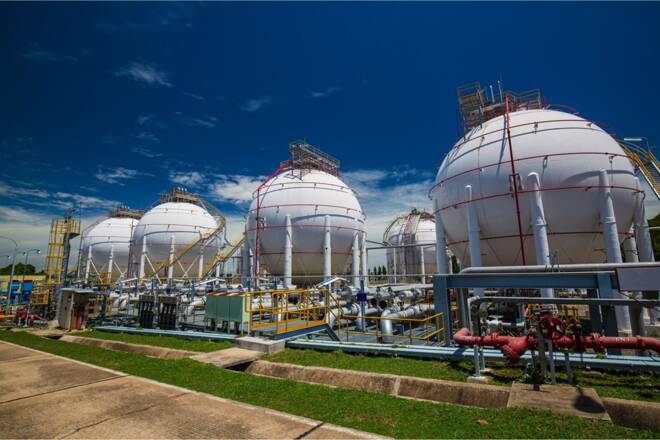Advertisement
Advertisement
Natural Gas Prices Forecast: Weather, Storage Surplus to Shape This Week’s Trade
By:
Next week's natural gas prices likely to echo effects of mild weather, high storage, with focus on global LNG demand and domestic output.
Highlights
- Mild weather, high storage likely to affect prices this week.
- Investors eye global LNG demand, domestic production trends.
- Futures market’s skepticism may influence this week’s prices.
Last Week’s Natural Gas Price Action
U.S. natural gas futures experienced a notable decline last week, primarily due to record-high production levels and forecasts for milder weather reducing heating demand.
The spot prices slid as the combination of increased output and lower-than-usual heating demand through mid-December suggests that utilities might withdraw less gas from storage.
This trend was evidenced by the U.S. Energy Information Administration’s (EIA) report showing an unexpected addition of 10 billion cubic feet (bcf) of gas to storage in the week ending November 24.
Supply and Storage Surplus
The current gas storage levels in the U.S. are about 7.2% higher than average for this time of year. This surplus is a result of the warmer-than-usual weather reducing the need for heating.
The front-month contract for natural gas was down for the fourth consecutive week, a trend not seen since February 2023. Such a consistent decline indicates that the market might not be expecting significant price spikes this winter.
Futures Market and Long-Term Projections
The futures market has shown signs that traders are skeptical about significant price increases in the near term. However, there is an expectation of a price rise in the coming years, particularly around 2025.
This forecast is based on the projected growth in demand, especially with new U.S. liquefied natural gas (LNG) export plants coming online in the U.S., Canada, and Mexico.
Recent Production and Demand Trends
The average gas output in the Lower 48 U.S. states reached a record 108.4 billion cubic feet per day (bcfd) in November. However, there was a slight decline in output in recent days.
The weather forecasts predict continued warmer conditions, which could lead to a drop in gas demand. The projected demand, including exports, is expected to decrease before rising again with the onset of cooler weather.
Exports and Global Market Influence
U.S. pipeline exports to Mexico have decreased, but they are expected to rise once new LNG facilities start operations. The U.S. is on track to become the world’s largest LNG supplier in 2023, with increased global demand partly driven by the geopolitical situation and supply disruptions.
Investor Interest Despite Price Slump
Despite the slump in natural gas prices, there has been significant investor interest in natural gas ETFs. This suggests that investors might be betting on a reversal of the current price trend, anticipating traditional seasonal pricing patterns to emerge later.
Summary and Outlook
In conclusion, while the U.S. natural gas market experienced a dip in prices last week due to high production and reduced heating demand, the future outlook remains cautiously optimistic. The market is closely watching for changes in weather patterns and global economic factors that might influence prices and demand in the short term.
The long-term outlook is more bullish, driven by expected growth in LNG exports and global demand.
About the Author
James Hyerczykauthor
James Hyerczyk is a U.S. based seasoned technical analyst and educator with over 40 years of experience in market analysis and trading, specializing in chart patterns and price movement. He is the author of two books on technical analysis and has a background in both futures and stock markets.
Advertisement
